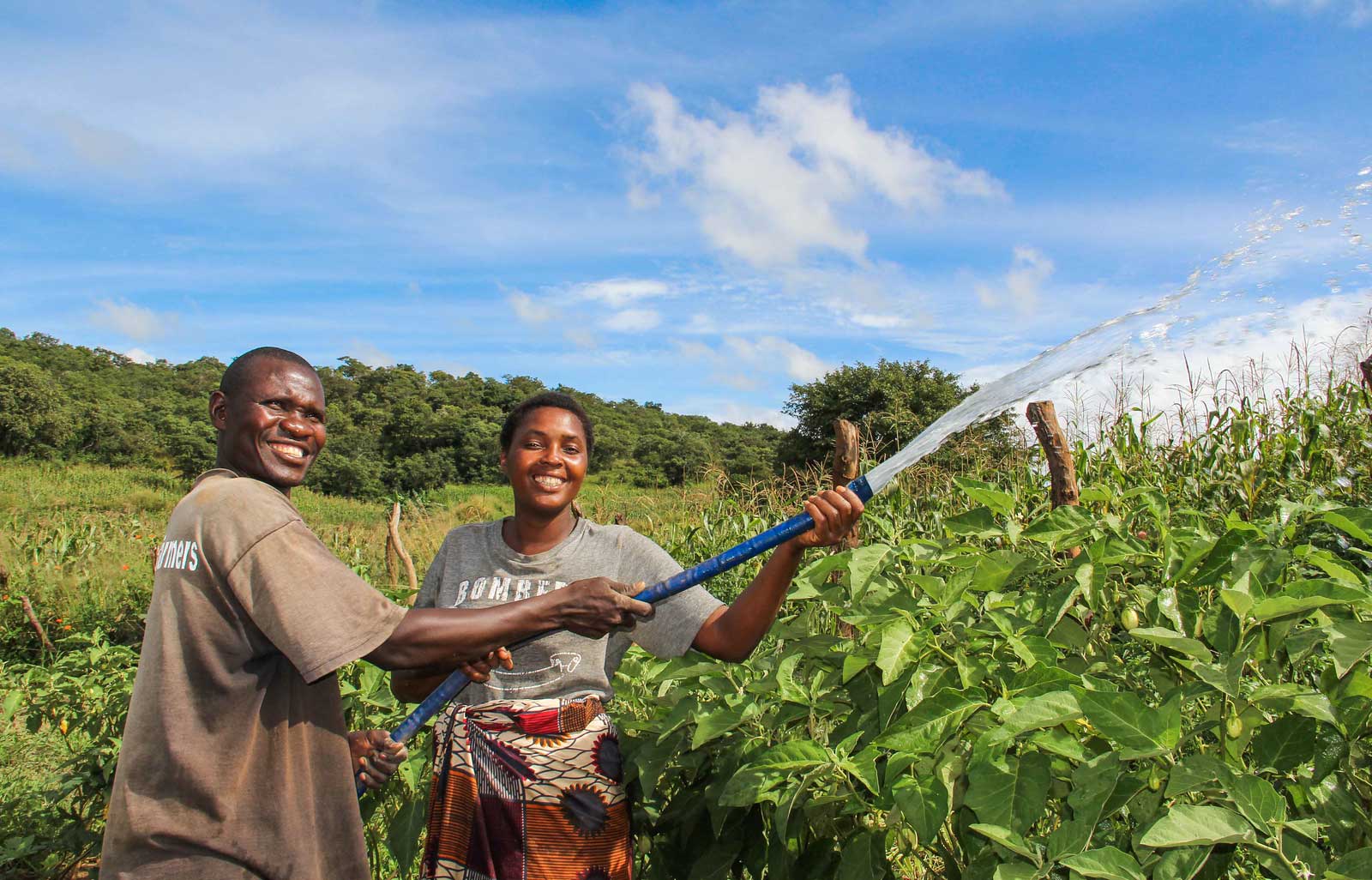Agriculture employs two-thirds of Africa’s population, and 80% of those living below the poverty line. More than anything, these households need an opportunity to make a lot more money.
The problem
The vast majority of these farmers rely on seasonal rains to water their crops. They all plant and harvest at the same time, flooding the local markets when prices are lowest.

Each year, farming families face the Hungry Season
In the off-season, food is scarce and expensive. Farming families must stretch their earnings from the last harvest to purchase food during this time. To cope, households often sell assets, borrow money, and reduce food consumption – especially nutritious fruits and vegetables – causing seasonal hunger and childhood stunting. With little to nothing left to buy high-quality inputs (seeds, fertilizer, etc.) for the next planting season, farmers remain trapped in a cycle of poverty.
Rain-fed subsistence farming
The opportunity
With irrigation, farmers break their dependence on seasonal rains by growing and harvesting high-value nutritious fruits and vegetables throughout the offseason. They sell between the rain-fed harvests, when prices are highest, and transform their farmers into highly profitable enterprises. Farmers who irrigate make the most money at the end of the dry season, enabling them to invest in high-quality inputs for the rain-fed planting season, driving a new cycle of increasing profits and yields.
Irrigated production
Multiple and diverse impacts
With a sustainable opportunity for income and food security, KickStart creates a host of diverse evidence-based impacts.
Africa’s untapped potential
Despite using less than 5% of its renewable ground and surface water, there is virtually no irrigation in Sub-Saharan Africa. Yet, it can be a solution for millions of smallholders.
Only 4% of farmland in Sub-Saharan Africa is irrigated (concentrated in Madagascar, South Africa, and Sudan).
This compares to over 40% across Asia and over 50% in India, as a result of the Green Revolution via large government subsidies.
Approximately 20% of smallholder farmers have access to shallow ground or surface water. Millions more can capture and store rainwater.
